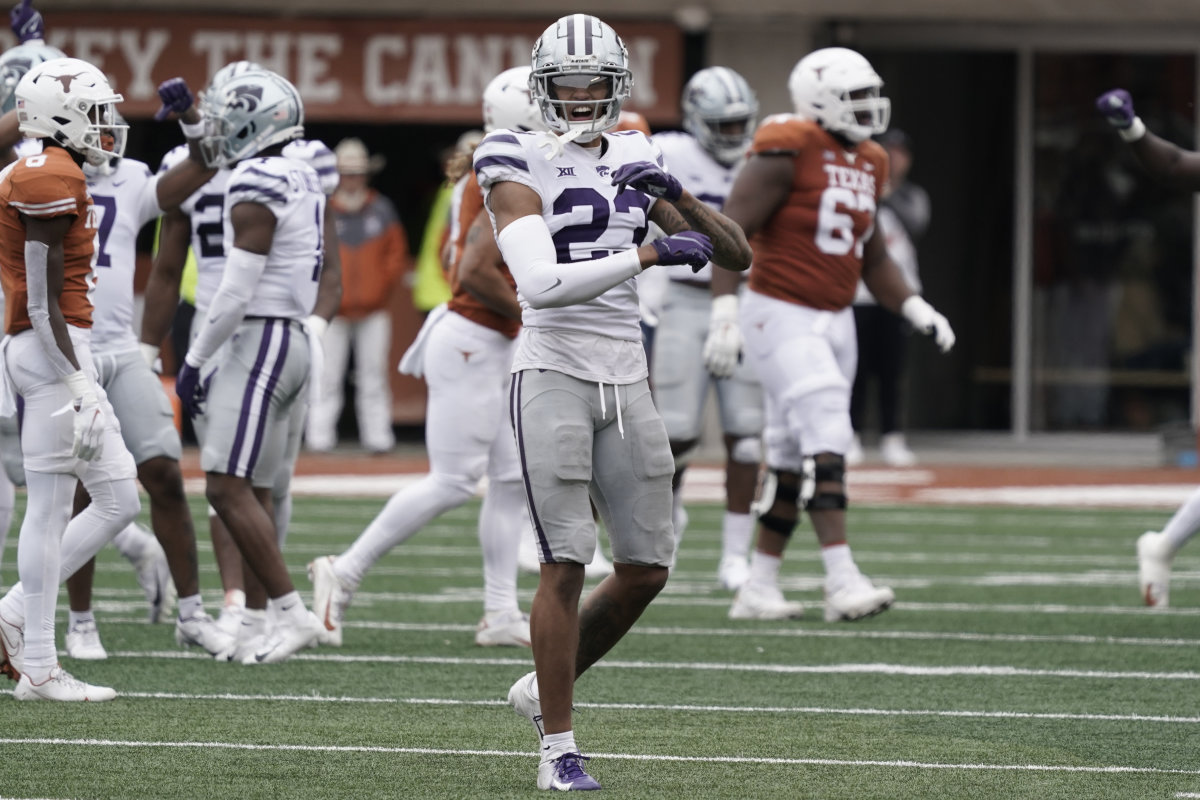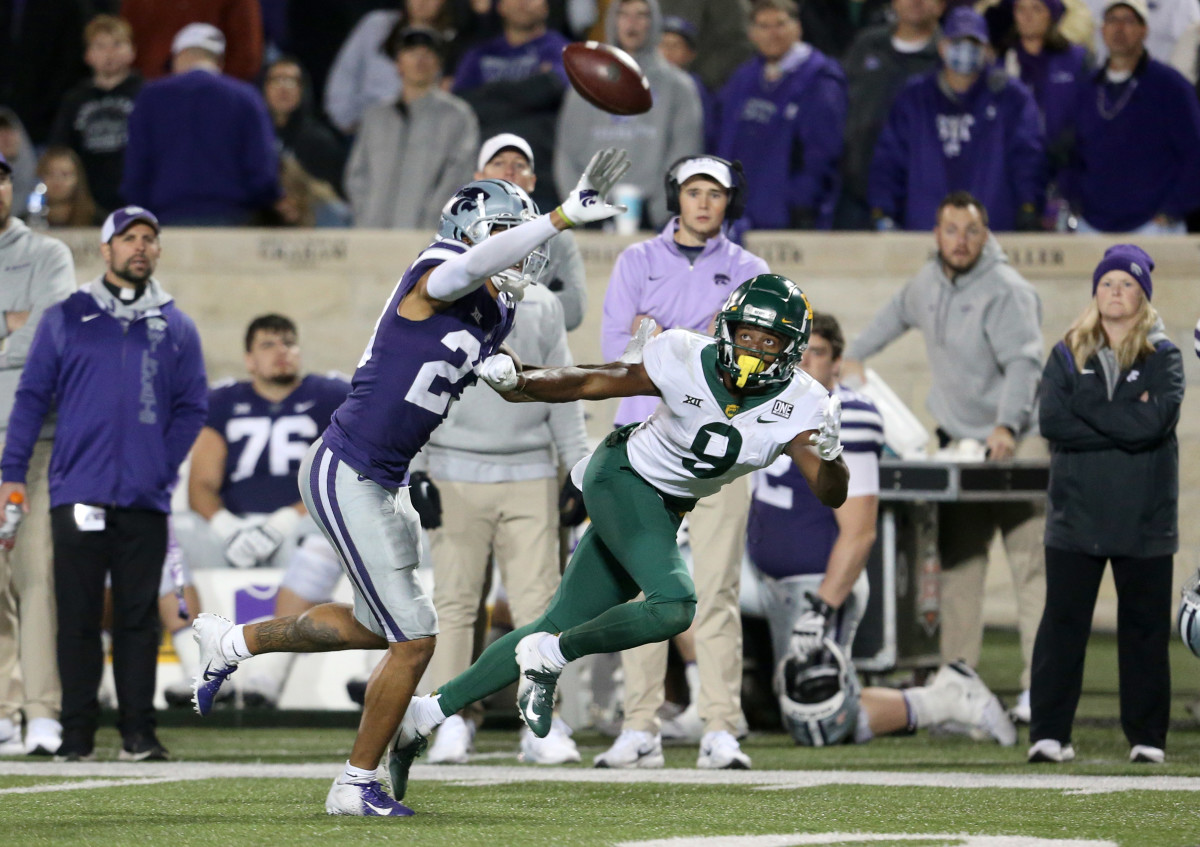Prospect Breakdown: Julius Brents, Cornerback, Kansas State

Playing cornerback at a high level is an extremely demanding and stressful task. NFL and college cornerbacks must be some of the most confident athletes on the field. Their success hinges on their ability to stick with receivers while moving backward and flipping their hips on every snap. While their work takes place on an island, meaning each mistake they make is magnified. Conversely, their good plays often lead the quarterback to look elsewhere; consequently, a cornerback's best snaps often go unnoticed. For these reasons and many more, strong cornerbacks are considered premier pieces of an NFL team. In a class that lacks a clear top player at the position, Kansas State's Julius Brents has flown below the radar despite his intriguing traits and play.
Born January 18th, 2000, in Indianapolis, Indiana, to parents Serena Fowlkes and Vontres Brents, Julius Brents was a standout athlete at Warner Central High School. In addition to his impressive work for the track and field program, the talented defender was a star on the football field. As a sophomore, Brents made 25 tackles, two interceptions, and four pass breakups. As a junior, he recorded 20 tackles, two sacks, and three pass breakups. As a team captain in his final season, the Indiana native put up 18 tackles, one interception, and three pass breakups. He lettered as a defensive back and helped his team to a 25-10 record in his three years as a meaningful contributor. Brents earned first-team all-conference honors in three straight seasons and first-team all-county recognition as a junior and senior. He made the 2017 American Family Insurance ALL-USA Central Indiana High School Football Super Team.
As a result of his impressive athletic traits and quality play, Brents was a sought-after high school prospect. 247Sports Composite Rankings named him a three-star recruit, the 439th-best player in his class, the 30th-ranked safety that year, and the fourth-overall senior from Indiana. He chose to attend the University of Iowa.
After an exciting high school career, the Warner Central product was poised to be an impact player in college. As a freshman, he played in 11 games on his way to 13 tackles, one interception, and three pass breakups. He was one of just 12 Iowa true freshmen to see the field in 2018. In 2019, Brents played in just one game due to injury and exercised his redshirt. In 2020, the talented defensive back played in seven games totaling four tackles and one pass breakup. He was named to Iowa's 2020 Leadership Group.
After a promising but inconsistent start to his college career, Brents chose to transfer to Kansas State before the 2021 season. As a fourth-year player, the athletic corner started 13 games. He put up 49 tackles, three tackles for loss, one interception, and two passes defended. The Wildcats' standout earned Honorable Mention All-Big 12. He was named to the 2022 Preseason All-Big 12 team and the 2022 Jim Thorpe Award watch list.

Perhaps the most intriguing aspect of Brents' draft profile is his potential. Though he has accumulated experience in the Big 10 and the Big 12, the Kansas State defensive back was a safety recruit in high school. His room for improvement is already exciting and may grow as he continues to learn the nuances of the position. Moreover, Brents has few athletic limitations; his issues are primarily technical and, therefore, teachable.
In a cornerback class without a consensus top player, the Indiana native boasts at least one trait that distinguishes him from his peers. Brents has been measured at a stellar 6026 and 203 pounds. Further, his 3378 arms and 8218 wingspan constitute elite length.
Cornerbacks with borderline elite size sometimes sacrifice movement to a concerning degree; Brents, however, is a clean athlete. He is explosive in all directions and exhibits linear and lateral burst out of his stance or his backpedal. This helps him compensate for any awkward transitions. Moreover, Brents' hip fluidity is impressive for his size, evidenced by his easy initial hip turns. Out of his transitions, the Wildcats' defender closes quickly. He displays good long speed to carry receivers deep and help him recover after improper hip turns.
In addition to his above-average movement skills, Brents is a physically strong player. He regularly overpowers receivers in coverage and works through blockers well despite his underdeveloped technique.
For all of his promise and enticing traits, Brents' best chance of seeing the field early in the NFL comes as a press-man corner. The massive cornerback uses his length well by playing at extension when engaging. He has stifling strength when he lands his hands properly. Additionally, Brents plays with clean technique. He typically avoids overcommitting or lunging and keeps his feet active. When he plays patiently, Brents is very sticky at the line of scrimmage. He initiates contact early and maintains hand placement through the catch point. If he manages to work into a top shoulder position, he slows wide receivers down easily to stay in phase. In general, Brents mirrors well after impacting wide receivers' timing with physicality and maintaining proper hand usage. He makes single transitions without much issue and can mirror route breaks before reaching top speed. He is extremely effective against non-breaking routes. He takes good angles out of his initial hip turn to stay in or find his way back to a favorable position. The Kansas State star has a knack for leveraging routes and using his length and strength to stay in phase after biting on salesmanship.
In run defense, Brents' history as a safety is apparent in his physicality. He is willing to initiate contact with blockers and works through receivers and, at times, offensive linemen. He has flashed the ability to stack linemen and tackle through engagement. Brents is also active in filling gaps, and he tends to diagnose the run quickly. The athletic defender is a physical tackler whose length gives him a wide range of impact.
Despite his rare traits, Brents' projection to the NFL is relatively unclear. The Kansas State defensive back is completely scheme and role-specific, and he should be deployed as an outside-only cornerback in a press-man scheme. Given his athletic profile, Brents is not an ideal option to cover small, quick receivers. The talented corner is very skinny and lacks pro-ready awareness in coverage.
In the league, Brents' movement skills, though impressive for his size, will be vulnerable to high-level route runners and athletes. He takes gather steps on sharp transitions and does not string hip turns together well, and his stop-start ability is below-average. If Brents flips his hips early, he struggles to recover, and his change of direction, while passable, is underwhelming.
The promising defender's movement deficiencies are most noticeable in coverage off the line of scrimmage. He lacks the fluidity to reliably mirror in off man and struggles to stay in phase without contact. Brents bites on salesmanship too much and loses to double moves consistently. He offers receivers far too many blind spots due to awkward hip turns. Further, Brents' poor eye discipline causes him to flip his hips late or otherwise give late reactions. Likewise, the Wildcats' starter's eyes and awareness are inconsistent in zone coverage. He gives up depth while reading the quarterback and bites on routes that should not be his concern. Brents' feel for route development and combinations is underdeveloped.
In press coverage, the athletic corner must refine certain technical flaws to find success in the NFL. Chief among them, Brents tends to give up his chest when attempting to jam at the line, reducing his functional power.
The most concerning piece of Brents' game is his work at the catch point. The talented defensive back does not find and play the ball well, and he regularly turns his head the wrong way to search for the pass. As a result, he gives up receptions even after strong coverage. His hand technique and strength are underwhelming; he fails to play through the receiver's hands and knock the ball loose. Despite his various tools, the former safety is a vulnerable point on defense, thanks largely to his inefficacy at the catch point.
Though he is a willing run defender, Brents must learn to clean up his game to reach his potential in that area. He plays with a high pad level against blockers and is, consequently, controlled and driven. What's more, his tackling technique is poor. He dives without wrapping up, and in doing so, he limits his stopping power and accuracy. His effort to chase breakaway ball carriers is questionable.

One of the prospective 2023 NFL Draft class's most intriguing athletes, Brents, is a promising yet flawed defender. He has the movement skills, play strength, and frame of a high-level professional cornerback. Still, he must learn to play the ball in the air. His inability to consistently defend passes even after stellar coverage makes him a liability at this stage of his development. Brents should also clean up his eyes in coverage.
Additionally, the exciting corner missed too many snaps with what seemed like minor injuries in 2021 - evidenced by the fact that he returned plays later. Brents' film as a fourth-year corner was that of a late day two or early day three player. He can grow into a high-value pick if he continues to improve the technical side of his game. Regardless, Brents is an outside-only, press-only cornerback who may need to benefit from curated matchups early in his career. While he can be a decent backup early in the league, the Kansas State standout's appeal is his notable ceiling. Brents can become a gifted starter in the NFL.
Grade (Floor / Ceiling): Backup outside-only corner in a press-man scheme / Above-average outside-only starting cornerback in a press-man scheme.
